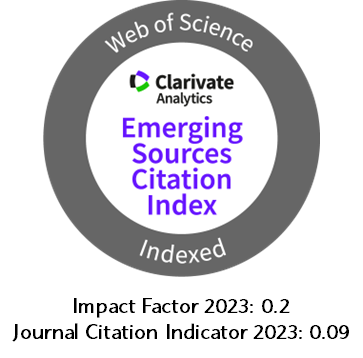Study of the organic matter fraction greater removal in the coagulation-flocculation process using surface water
DOI:
https://doi.org/10.5377/nexo.v24i1.596Keywords:
Organic matter, Trihalomethanes, Fractionation, Superficial waterAbstract
In this work, we performed the separation of natural organic matter (MON) present in the raw water that supplies two water treatment plants, one from river (Boaco) and one from lake (Juigalpa), in two types: hydrophobic, formed by the fractions very hydrophobic (MH) and slightly hydrophobic (LH); and the hydrophilic type constituted by the charged (CHA) and neutral (NEU) fractions. These waters obtained from each fraction were subjected to a process of coagulation-flocculation-sedimentation on a laboratory scale using aluminum sulfate as a coagulant, wherein the hydrophilic fraction (CHA and NEU) was poorly removed (< 35 %) in comparison with the hydrophobic one (> 65 %). Surrogate parameters were used to characterise this MON such as dissolved organic carbon (COD), colour, ultraviolet absorbance (UV254) and specific ultraviolet absorbance (SUVA). Determination of SUVA values indicates a mixture of hydrophobic and hydrophilic organic matter in both raw waters as their values of specific ultraviolet absorbance (SUVA) were between 2-4 L/mg-m; however the hydrophobic fraction (MH + LH) was the predominant one, 63.6 % and 65 % measured as COD in dry season for Boaco and Juigalpa respectively, in rainy season, the percentage were a little higher (71.2 % and 66.1 %). Finally, it was found that the river water (Boaco) contains higher concentrations of trihalomethanes (89-166 μg/L) than the water lake (Juigalpa) (28-80 μg/L) after being chlorinated. Found that the hydrophobic fraction was the major contributor in 68.5 % (Boaco) and 78.6 % (Juigalpa) to the formation of trihalomethanes for dry season in both treated water. In rainy season, the THMs formation were a little higher.
Keywords: Organic matter; Trihalomethanes; Fractionation; Superficial water
DOI: http://dx.doi.org/10.5377/nexo.v24i1.596
Nexo, Vol. 24, No. 1, pp. 72-80, 2011
Downloads
1394
Downloads
Published
How to Cite
Issue
Section
License
The authors who publish in Nexo Scientific Journal agree to the following terms:
- Authors retain the copyright and grant the journal the right of the first publication under the license Creative Commons Attribution License, which allows others to share the work with a recognition of the authorship of the work and the initial publication in Nexo Scientific Journal.
- Authors may separately establish additional agreements for the non-exclusive distribution of the version of the work published in the journal (for example, in an institutional repository or a book), with the recognition of the initial publication in Nexo Scientific Journal.
- Authors are allowed and encouraged to disseminate their works electronically (for example, in institutional repositories or in their own website) before and during the submission process, as it can lead to productive exchanges, as well as earlier and greater citation of published works.











